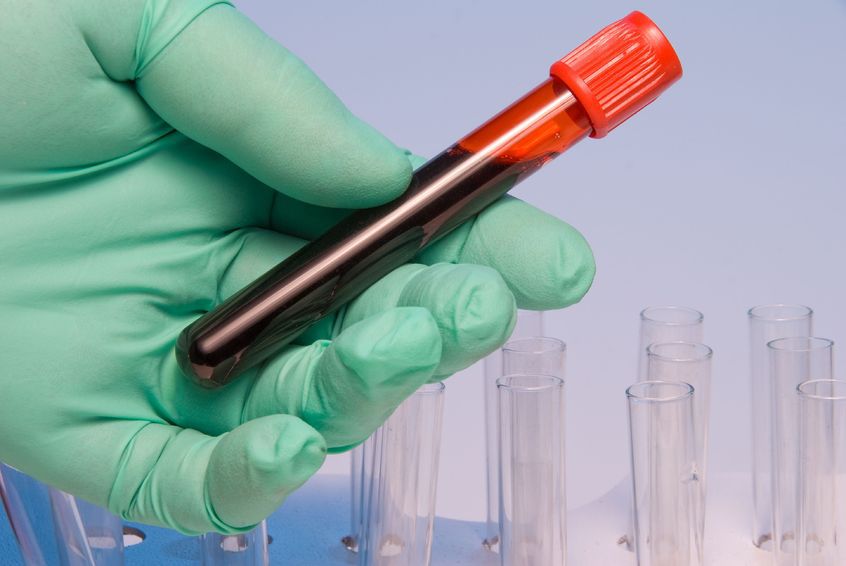Drug testing plays a crucial role in ensuring safety and compliance in various settings, including the workplace, sports, and criminal justice system. By detecting the presence of illicit drugs, performance-enhancing substances, and certain prescription medications, drug tests help maintain a drug-free environment and protect the well-being of individuals.
This article aims to provide an overview of drug testing methods, applications, and the substances commonly detected in these tests. Furthermore, it will discuss the health effects and side effects associated with drug use, as well as the importance of accurate and reliable testing. The information provided will enable readers to gain a better understanding of drug testing processes and their significance in various contexts.
Types of Drug Tests
Urine tests are the most common form of drug testing due to their relative ease of collection and cost-effectiveness. A person being tested provides a urine sample in a collection cup, which is then analyzed for the presence of specific drugs or their metabolites. Urine tests can detect a wide range of substances, including illicit drugs, prescription medications, and performance-enhancing substances like anabolic steroids.
Blood Tests
Blood tests are less common than urine tests but provide a more accurate representation of a person’s current level of intoxication or recent drug use. A blood sample is drawn from the individual and analyzed for the presence of drugs or their metabolites. Blood tests can detect substances that have been recently ingested and are still present in the bloodstream.
Hair Tests
Hair drug tests analyze a small sample of hair for the presence of drugs and their metabolites. As drugs are circulated through the bloodstream, they become incorporated into the hair shaft, allowing for the detection of drug use over an extended period, typically up to 90 days. Hair tests are particularly useful for detecting long-term drug use or patterns of drug abuse.
Oral Fluid Tests
Oral fluid tests, also known as saliva tests, are a non-invasive method of drug testing that analyzes a person’s saliva for the presence of drugs or their metabolites. These tests can detect recent drug use and are often employed in situations where a rapid result is required, such as roadside drug testing. Oral fluid tests are less sensitive than urine or blood tests but offer the advantage of being less intrusive and easier to administer.

Applications of Drug Testing
Many employers require pre-employment drug testing as part of their hiring process to ensure a safe and drug-free workplace. This type of testing helps employers identify potential employees who may be using illegal substances or abusing prescription medications, which could impact job performance and safety.
Random Drug Testing
Random drug testing is conducted without prior notice to employees and serves as a deterrent for drug use in the workplace. By implementing random drug testing, employers can promote a drug-free environment and reduce the risks associated with substance abuse among their workforce.
Post-Accident Testing
Post-accident drug testing is often required following a workplace incident to determine if drug use played a role in the accident. This type of testing helps employers identify the root cause of the incident and take appropriate action to prevent similar occurrences in the future.
| Steroid | Detection Time |
|---|---|
Enanthate |
|
Propionate |
|
Cypionate |
|
Suspension |
|
Sports Drug Testing
Athletes at all levels of competition are subject to drug testing to detect the use of performance-enhancing substances, such as anabolic steroids. Sports authorities conduct these tests to ensure a level playing field and maintain the integrity of athletic competitions.
Doping Control in Professional Sports
Doping control is an essential aspect of professional sports, with athletes undergoing rigorous testing to ensure compliance with anti-doping regulations. Sports organizations implement strict protocols to detect and sanction athletes who use prohibited substances, protecting the fairness and spirit of competition.
Drug Courts
Drug courts often require participants to undergo regular drug testing as part of their rehabilitation and treatment programs. These tests help monitor progress and ensure compliance with court-mandated treatment plans, ultimately promoting recovery and reducing recidivism.
Probation and Parole Drug Testing
Individuals on probation or parole may be subject to drug testing as a condition of their release. Regular drug testing helps ensure compliance with the terms of probation or parole and supports ongoing rehabilitation efforts for individuals with a history of substance abuse.

Drugs Detected in Tests
Drug tests are designed to detect various illicit drugs, including marijuana, cocaine, amphetamines, methamphetamine, and opioids. These substances are commonly abused and can have significant adverse health effects, making it essential for employers, sports organizations, and criminal justice systems to monitor their use. Different drug classes have unique chemical structures and pharmacological effects, which influence how they are detected in drug tests and the potential health consequences associated with their use.
Prescription Drugs
Prescription drugs, such as benzodiazepines, opioids, and amphetamines, can also be detected in drug tests. Although these medications are prescribed by medical professionals for legitimate reasons, they can be misused or abused, leading to potential health risks and negative consequences. Some drug tests are specifically designed to detect commonly misused prescription drugs to ensure their appropriate use and monitor for potential abuse.
Performance-Enhancing Drugs (Anabolic Steroids)
Performance-enhancing drugs, such as anabolic steroids, are often the target of drug tests in sports settings. These substances can provide athletes with an unfair advantage by increasing muscle mass, strength, and endurance, but they also carry dangerous side effects and long-term health risks. Anabolic steroids, which are synthetic versions of the hormone testosterone, can be detected using specialized testing methods, such as gas chromatography-mass spectrometry or liquid chromatography-tandem mass spectrometry, to identify their presence in biological samples.

Health Effects and Side Effects of Drug Use
Drug use, particularly when involving illicit substances or the misuse of prescription medications, can lead to a range of adverse health effects. These may include both short-term and long-term consequences, such as addiction, organ damage, and an increased risk of a heart attack. The severity of these effects often depends on the type of drug used, the frequency of use, and the individual’s overall health.
Side Effects of Specific Drugs
Each drug has its own set of potential side effects, which can vary from mild to severe. Common side effects of drug use may include drowsiness, nausea, dizziness, and mood changes. More serious side effects can include respiratory depression, seizures, or even death. It is essential to consult a medical professional when using prescription drugs and to follow the recommended dosage and usage guidelines to minimize the risk of adverse side effects.
Potential Risks Associated with Drug Use
Drug use, especially when involving illegal substances, can pose significant risks to an individual’s physical and mental health. These risks may include addiction, overdose, and the transmission of infectious diseases through shared drug paraphernalia. Drug use can have negative social and economic consequences, such as strained relationships, job loss, and financial difficulties. It is crucial to be aware of these potential risks and seek support from a healthcare professional or drug treatment center if necessary.

Ensuring Accurate and Reliable Drug Testing
Confirmation testing is an essential component of the drug testing process. This secondary testing method is used to verify the results of initial screening tests, particularly when a positive result is obtained. Confirmation testing typically employs more sophisticated and accurate techniques, such as gas chromatography-mass spectrometry (GC-MS), to ensure the reliability of the results and minimize the likelihood of false positives or false negatives.
Quality Control and Laboratory Standards
Adhering to strict quality control and laboratory standards is crucial for ensuring the accuracy and reliability of drug testing results. Laboratories conducting drug tests should follow established guidelines and protocols, such as those set by the Substance Abuse and Mental Health Services Administration (SAMHSA) or other accrediting organizations. These guidelines include proper sample collection, handling, and analysis procedures, as well as routine proficiency testing and external quality assessment programs to maintain the highest level of accuracy and reliability.
Legal and Ethical Considerations
Drug testing, particularly in the workplace, must be carried out in accordance with applicable laws and ethical guidelines. Employers should be transparent about their drug testing policies, provide employees with clear information about the process, and ensure that results are kept confidential. Employers must take steps to avoid discriminatory practices and ensure that any disciplinary actions resulting from positive drug test results are fair and consistent.

Analytical Techniques in Drug Testing
Chromatography is a widely used analytical technique in drug testing, allowing for the separation and identification of various compounds within a sample. There are different types of chromatography, such as Gas Chromatography (GC) and High-Performance Liquid Chromatography (HPLC), each with its specific applications and advantages in the analysis of drug samples.
Mass Spectrometry
Mass spectrometry is another powerful analytical technique used in drug testing to identify and quantify substances in a sample. By measuring the mass-to-charge ratio of ions, mass spectrometry can provide detailed information about the molecular composition of a sample. When combined with chromatography, mass spectrometry enables highly sensitive and accurate detection of drugs and their metabolites.
Other Analytical Techniques
Aside from chromatography and mass spectrometry, there are various other analytical techniques employed in drug testing. These may include solid phase extraction, immunoassays, and nuclear magnetic resonance spectroscopy. The choice of the appropriate method depends on factors such as the type of sample, the target analytes, and the desired sensitivity and specificity of the analysis.
Quality Control and Accuracy in Drug Testing
Ensuring quality control and accuracy in drug testing is of utmost importance to provide reliable results. The use of standardized protocols, certified reference materials, and regular performance checks are essential aspects of quality control. The use of peer-reviewed techniques, such as those published in the Journal of Chromatography and the Journal of Chromatography B, can help to maintain the highest standards of analytical performance in drug testing laboratories.

Resources and Support for Drug Users
Drug treatment centers offer comprehensive and evidence-based addiction treatment for individuals struggling with drug misuse. These facilities typically provide a range of services, including detoxification, inpatient and outpatient care, therapy, and aftercare support. The goal of drug rehabilitation is to help individuals overcome their addiction, develop healthy coping mechanisms, and reintegrate into society as productive members.
Drug Education and Prevention Programs
Drug education and prevention programs aim to inform individuals, especially youths, about the risks and consequences of drug misuse. These programs often involve schools, community organizations, and local governments working together to raise awareness and promote healthy decision-making. By providing accurate information and fostering open discussions about drugs, such initiatives can help prevent drug abuse and addiction in the long run.
Support Groups
Support groups offer a safe and supportive environment for individuals recovering from drug addiction. These groups, such as Narcotics Anonymous (NA) and SMART Recovery, provide peer-to-peer support and encouragement throughout the recovery process. Members share their experiences, learn from each other’s struggles, and celebrate their victories together. Support groups can be invaluable resources for maintaining long-term sobriety and preventing relapse.

Drug Treatment and Rehabilitation
Drug rehabilitation centers provide comprehensive care for individuals struggling with drug addiction. These facilities offer a range of services, including detoxification, inpatient and outpatient care, therapy, and aftercare support. The goal of drug rehabilitation is to help individuals overcome their addiction, develop healthy coping mechanisms, and reintegrate into society as productive members.
Drug Treatment Programs and Therapies
Drug treatment programs and therapies are tailored to meet the specific needs of each individual, taking into account factors such as the type of drug used, the severity of the addiction, and any underlying mental health issues. Common therapies include cognitive-behavioral therapy (CBT), group therapy, family therapy, and medication-assisted treatment (MAT) using drugs such as methadone or buprenorphine. These evidence-based treatments aim to address the root causes of addiction and help individuals build a strong foundation for long-term recovery.
Legal Aspects of Drug Rehabilitation
The legal aspects of drug rehabilitation can vary depending on the jurisdiction and the specific circumstances of each case. In some cases, individuals may be mandated to attend drug rehabilitation programs by drug courts as an alternative to incarceration.
These programs often involve strict supervision, regular drug testing, and participation in evidence-based treatments. Drug driving studies and drug screening systems are also utilized to monitor compliance and ensure public safety. Some rehabilitation centers may require individuals to sign a collection kit consent form, allowing the facility to collect specimens for drug testing throughout the treatment process.

Drug Information and Education
Alcohol and Drug Information resources provide valuable insights into the effects of various substances, their risks, and the support available for those struggling with addiction. These resources aim to educate individuals, families, and communities about the dangers of substance abuse and help them make informed decisions about their health and well-being.
American Council for Drug Education
The American Council for Drug Education (ACDE) is a non-profit organization dedicated to promoting drug awareness, prevention, and education. The ACDE provides resources and support for educators, parents, and community leaders to help them address drug-related issues and create drug-free environments. Their initiatives include educational materials, training programs, and advocacy efforts to shape public policy.
National Clearinghouse for Alcohol and Drug Information
The National Clearinghouse for Alcohol and Drug Information (NCADI) serves as a central repository of information related to substance abuse and addiction. NCADI offers a wide range of resources, including publications, research reports, and multimedia materials, aimed at increasing public awareness and understanding of substance abuse issues. The organization also provides support for individuals seeking help for themselves or loved ones affected by addiction.
Drug Awareness and Prevention Programs
Drug awareness and prevention programs are essential in educating individuals about the risks associated with drug use and promoting healthy, drug-free lifestyles. These programs often target specific populations, such as school-aged children, athletes, or employees in safety-sensitive positions. Some programs, like Drug Courts, may also work in tandem with the criminal justice system to provide alternatives to incarceration for individuals struggling with addiction.



